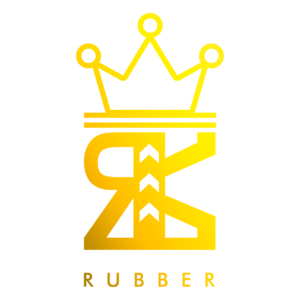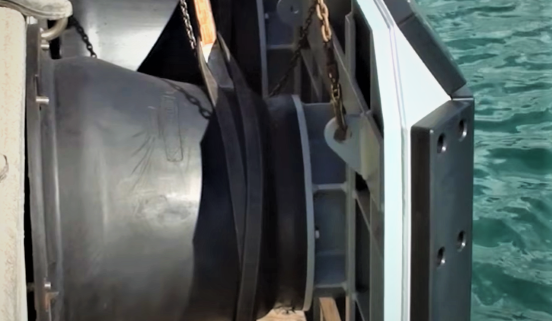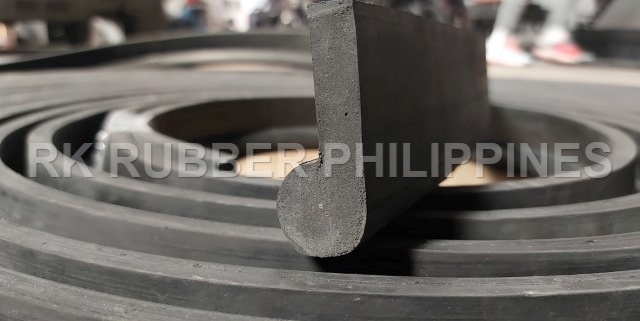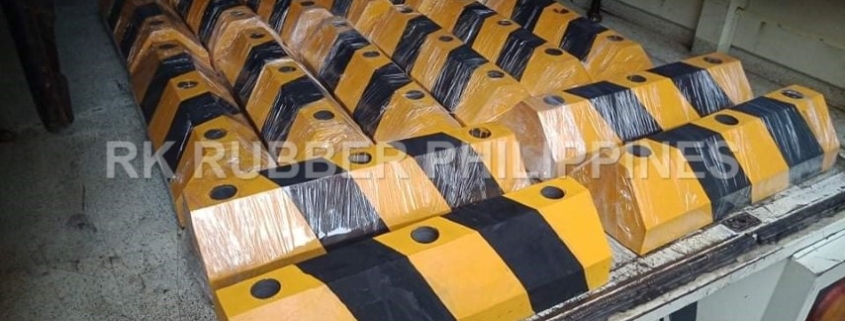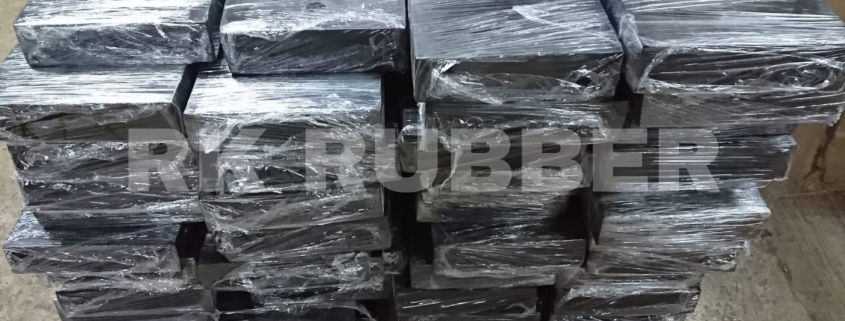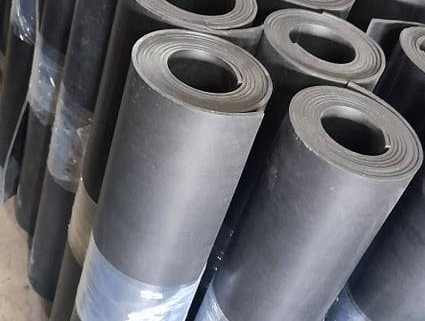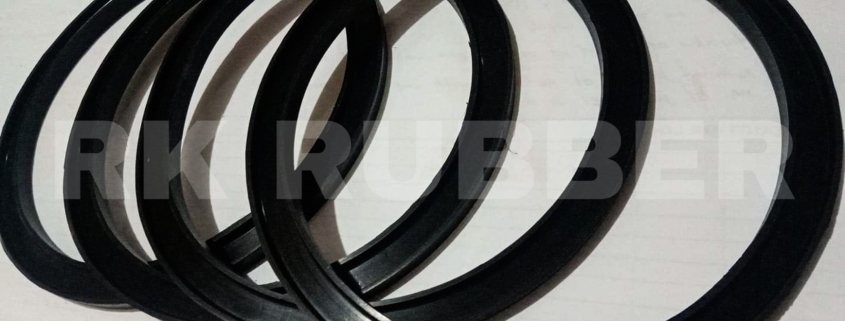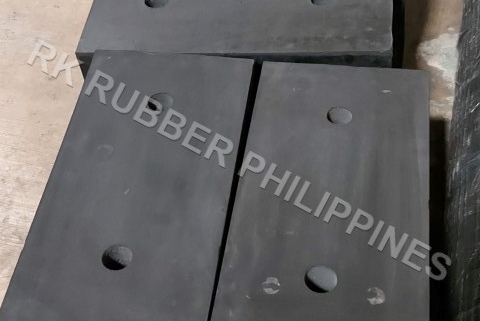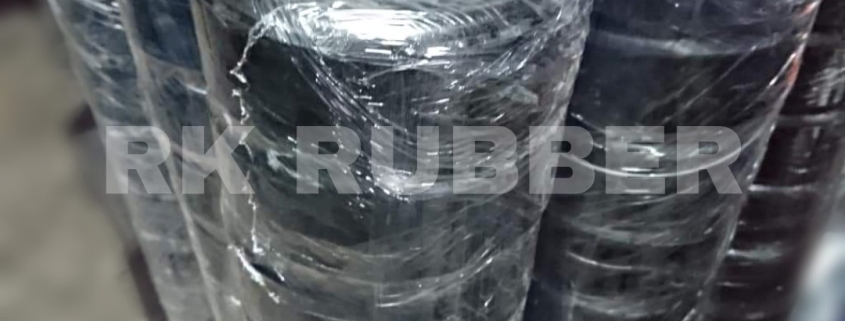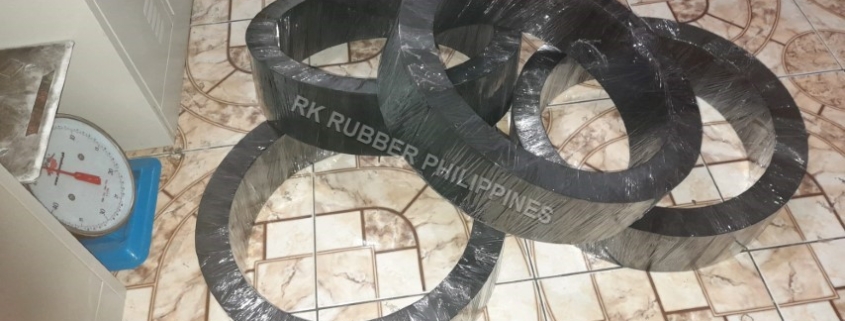Rubber Wheel Guard
in Rubber ProductRubber Wheel Guard Manufacturer in the Philippines | RK Rubber Enterprise Co.
RK Rubber Enterprise Co. is a leading manufacturer of rubber wheel guards in the Philippines, built on a strong commitment to safety, performance, and sustainability. The company offers durable products that minimize vehicle damage, tire blowout risks, and injury risks for pedestrians, all while reducing maintenance costs and environmental impact. With a focus on quality and innovation, RK Rubber Enterprise provides tailored solutions for various parking and industrial settings. Their products are designed for ease of installation, compliance with safety standards, and superior durability. By exploring RK Rubber Enterprise’s offerings, you can discover how their expertise can benefit your specific needs.
Key Points
- RK Rubber Enterprise is a renowned Philippine-based manufacturer of high-quality rubber wheel guards.
- The company prioritizes safety, performance, and innovation in its product offerings and manufacturing processes.
- Rubber wheel guards by RK Rubber Enterprise offer exceptional impact resistance, durability, and low maintenance requirements.
- They provide cost-effective, eco-friendly, and adaptable solutions for various parking and industrial settings.
- RK Rubber Enterprise ensures compliance with safety standards in design and manufacturing, guaranteeing a reliable product.
Benefits of Rubber Wheel Guards
As RK Rubber Enterprise Co.’s primary offering, rubber wheel guards boast numerous benefits that make them a preferred choice for various parking and industrial applications. Their exceptional impact resistance prevents vehicle damage and minimizes tire blowout risks. The softer material compared to traditional concrete or asphalt alternatives reduces vehicle damage upon impact, making them a safer option for drivers and pedestrians.
Rubber wheel guards are also durable and long-lasting, providing excellent shock absorption and resistance to cracking and breaking. They require low maintenance, enhancing practicality for parking lot safety and ensuring longevity. This translates to reduced costs and downtime for parking areas, making them an attractive option for businesses and property owners. Additionally, the environmental benefits of rubber wheel guards, such as their recyclable nature, make them a more sustainable choice. With their numerous benefits, rubber wheel guards are an ideal solution for parking and industrial applications where safety, durability, and practicality are paramount. Their adaptability to various settings and customizable options further solidify their position as a preferred choice.
Features and Specifications
At the forefront of RK Rubber Enterprise Co.’s innovative offerings, rubber wheel guards boast an array of features and specifications that underscore their practicality and effectiveness in various parking and industrial applications. These features and specifications are designed to provide high safety, durability, and ease of installation.
Some key features and specifications of RK Rubber Enterprise Co.’s rubber wheel guards include:
- Durable Materials: Made from various materials, including nitrile, synthetic rubber, natural rubber, neoprene, and Viton, ensuring long-lasting performance and resistance to weathering and impacts.
- Adjustable Dimensions: Available in various sizes to fit specific parking layouts and vehicle sizes, providing a tailored solution for different applications.
- Enhanced Visibility: Designed with high-visibility colors to enhance safety in low-light conditions and clear parking spaces’ demarcation.
These features and specifications make RK Rubber Enterprise Co.’s rubber wheel guards an ideal choice for parking and industrial applications, providing high safety, durability, and practicality.
Installation and Maintenance
The installation of rubber wheel guards from RK Rubber Enterprise Co. is a relatively straightforward process that can be completed with minimal downtime for parking areas. The process involves cutting the guard to size and securing it with screws, requiring minimal tools and specialized training.
To guarantee ideal performance, regular maintenance checks are recommended. This includes inspecting the guards for signs of wear and tear, cleaning them regularly, and replacing them as needed. Proper maintenance can help extend the lifespan of the guards and guarantee they continue to provide effective protection for vehicles and pedestrians.
| Maintenance Tasks | Frequency | Description |
|---|---|---|
| Inspection | Quarterly | Check for signs of wear and tear, damage, or degradation |
| Cleaning | Monthly | Clean the guards to prevent dirt and debris buildup |
| Replacement | As needed | Replace the guards if they are damaged or no longer effective |
| Adjustment | As needed | Adjust the guards to guarantee proper alignment and fit |
| Inspection of screws | Quarterly | Check the screws for signs of rust or damage |
Safety and Security Features
Effective safety measures are essential in preventing accidents and minimizing damage in parking areas. Rubber wheel guards, manufactured by RK Rubber Enterprise Co., are crucial in maintaining safety and security in these areas. They provide a robust barrier that prevents vehicles from rolling beyond designated parking spaces, thereby protecting pedestrians, infrastructure, and vehicles.
Key safety and security features of RK Rubber’s wheel guards include:
- Impact resistance: Our wheel guards are designed to absorb impacts, reducing the risk of vehicle damage and minimizing tire blowout risks.
- Clear demarcation: The wheel guards provide clear demarcation of parking spaces, reducing the likelihood of accidents and improving overall safety.
- Pedestrian safety: The soft material of our wheel guards minimizes injury risks for pedestrians, enhancing overall safety in parking areas.
Environmental Impact and Sustainability
Safety features in parking areas are often designed to protect people and property, but their environmental footprint also warrants consideration. When it comes to rubber wheel guards manufactured by RK Rubber Enterprise Co., sustainability plays an essential role. Made from eco-friendly materials such as nitrile, synthetic rubber, natural rubber, neoprene, and Viton, these wheel guards contribute to reduced environmental impact.
The production process of rubber wheel guards involves minimal waste generation and energy consumption. In addition, RK Rubber Enterprise Co. prioritizes responsible sourcing of raw materials, ensuring that the environmental impact of its operations is minimized. Additionally, rubber wheel guards are designed to be durable and long-lasting, reducing the need for frequent replacements and thereby minimizing waste.
Rubber wheel guards also promote environmental sustainability by reducing the risk of pollution from vehicle damage and minimizing the need for resource-intensive concrete or metal alternatives. By choosing RK Rubber Enterprise Co.’s rubber wheel guards, businesses and institutions can contribute to a more sustainable future while maintaining the safety and security of their parking areas. The company’s commitment to sustainability reflects its dedication to both environmental responsibility and product excellence.
Advantages Over Metal Guards
Compared to metal wheel guards, RK Rubber Enterprise Co.’s rubber wheel guards offer several distinct advantages. One of the primary benefits of rubber wheel guards is their ability to provide a safer and more forgiving surface for vehicles to interact with. Unlike metal wheel guards, which can cause significant damage to vehicles and pose a tripping hazard to pedestrians, rubber wheel guards are designed to absorb impact and reduce the risk of damage.
Some of the key advantages of RK Rubber Enterprise Co.’s rubber wheel guards over metal guards include:
- Reduced risk of damage: Rubber wheel guards are designed to absorb impact, reducing the risk of damage to vehicles and infrastructure.
- Improved safety: Rubber wheel guards provide a softer and more forgiving surface, reducing the risk of injury to pedestrians and minimizing the risk of tripping hazards.
- Lower maintenance costs: Rubber wheel guards require less maintenance than metal guards, as they are less prone to rust and corrosion and do not require regular painting or coating.
Comparison With Concrete Guards
RK Rubber Enterprise Co.’s rubber wheel guards offer a distinct set of advantages over concrete wheel guards, primarily due to their unique properties and design. One of the key benefits of rubber wheel guards is their exceptional impact resistance, which prevents vehicle damage and minimizes tire blowout risks. Unlike concrete wheel guards, which can crack or crumble under extreme weather conditions, rubber wheel guards are highly resistant to weather changes, UV light, and vehicle impacts.
In contrast to concrete wheel guards, which can be hazardous due to their rigid nature, rubber wheel guards provide a softer material that reduces vehicle damage upon impact and minimizes injury risks for pedestrians. Additionally, rubber wheel guards require low maintenance and can be easily installed on various surface types, reducing downtime for parking areas. While concrete wheel guards may be less expensive upfront, the long-term benefits of rubber wheel guards often outweigh the initial costs, making them a more cost-effective and practical solution for parking lot safety. Overall, rubber wheel guards offer a superior alternative to concrete wheel guards regarding durability, safety, and maintenance.
Why Choose RK Rubber Enterprise
High-quality wheel guards are essential for ensuring the safety and efficiency of parking lots, and RK Rubber Enterprise offers a superior solution. With a strong commitment to safety and performance, RK Rubber Enterprise has established itself as a reputable manufacturer of rubber wheel guards in the Philippines. The company’s dedication to quality and innovation has earned it a positive reputation among customers, who appreciate the durability and effectiveness of its products.
Some key reasons to choose RK Rubber Enterprise include:
- Proven Track Record: RK Rubber Enterprise has a long history of delivering high-quality wheel guards that meet the needs of various industries and applications.
- Innovative Solutions: The company continuously invests in research and development to improve its products and stay ahead of the competition.
- Commitment to Safety: RK Rubber Enterprise prioritizes safety in its product design and manufacturing processes, ensuring that its wheel guards provide maximum protection for vehicles, pedestrians, and infrastructure.
Frequently Asked Questions
Can RK Rubber Customize Wheel Guards for Specific Industries?
Customization options are available for specific industries, with tailored solutions for different vehicle sizes and adjustable dimensions to fit distinct parking layouts, accommodating unique industry requirements and ensuring maximum safety and functionality.
Are Rubber Wheel Guards Suitable for High-Traffic Areas?
Rubber wheel guards are suitable for high-traffic areas due to their exceptional durability, shock absorption, and resistance to cracking and breaking, making them a practical choice for demanding environments that require enhanced safety and longevity.
Do RK Rubber Wheel Guards Meet International Safety Standards?
RK Rubber’s wheel guards adhere to stringent international safety standards, ensuring exceptional durability and impact resistance, while also providing clear demarcation of parking spaces and minimizing injury risks for pedestrians in low-light conditions.
Can Rubber Wheel Guards Be Used Outdoors in Extreme Weather?
Rubber wheel guards can withstand extreme weather conditions, including heavy rain, intense sunlight, and freezing temperatures, making them a suitable choice for outdoor applications due to their durable and UV-resistant materials.
Are RK Rubber Wheel Guards Made From 100% Recycled Materials?
Rubber wheel guards can be manufactured from eco-friendly materials. While many are made from a blend of recycled and natural materials, not all are made from 100% recycled materials, varying by manufacturer and product specifications.
Conclusion
The implementation of rubber wheel guards in parking areas greatly enhances safety and efficiency. RK Rubber Enterprise Co.’s products demonstrate high performance, durability, and innovation. The benefits of rubber wheel guards, including reduced maintenance and environmental impact, are evident in comparison to metal and concrete alternatives. As a result, the use of rubber wheel guards is a viable solution for promoting a safer and more efficient parking experience.
Rubber Sheet
in Rubber ProductRubber Sheet Manufacturer in the Philippines | RK Rubber Enterprise Co.
RK Rubber Enterprise Co. is a leading manufacturer of high-quality rubber sheets in the Philippines, catering to various industrial applications and industries through its extensive range of rubber sheet products. Its state-of-the-art equipment and strict quality control measures guarantee high durability and elasticity in compound materials. The company offers diverse types of rubber sheets, including natural rubber, neoprene, nitrile, EPDM, and silicone rubber, each designed to meet specific industry requirements. From construction to medical applications, RK Rubber Enterprise Co.’s products provide reliable solutions, and their commitment to innovation and customer satisfaction drives further product development, shaping the industry’s future.
Key Points
- RK Rubber Enterprise is a leading manufacturer of high-quality rubber sheets in the Philippines, serving various industrial applications.
- The company utilizes state-of-the-art equipment and adheres to rigorous quality control measures to ensure product durability and elasticity.
- RK Rubber Enterprise offers diverse compound materials, including Natural Rubber, Neoprene Rubber, Nitrile Rubber, EPDM Rubber, and Silicone Rubber.
- Their rubber sheets are widely used in construction, automotive, electronics, medical, aerospace, and marine industries due to their excellent insulation properties and chemical resistance.
- RK Rubber Enterprise is committed to innovation, customer satisfaction, and sustainability, with a strong focus on research and development to advance rubber sheet technology.
Key Features of Rubber Sheets
Their key features are essential to the functionality and versatility of rubber sheets, which include durability, flexibility, and resistance to extreme conditions. These characteristics make rubber sheets ideal for a wide range of applications across various industries. Durability allows them to withstand harsh environmental conditions, while flexibility enables them to be molded into various shapes and sizes.
Rubber sheets are also resistant to extreme temperatures, chemicals, and vibrations, making them suitable for use in factories, laboratories, and other industrial settings. Additionally, their chemical resistance protects against oil, chemicals, gas, and corrosion, further expanding their potential applications. The flexibility of rubber sheets also eliminates vibration and noise, adapting to uneven surfaces and providing a reliable seal.
Customizable options are also available, allowing for specific properties such as oil resistance, slip resistance, and noise reduction to be incorporated into the rubber sheets. This flexibility and cost-effectiveness make rubber sheets an attractive alternative to metal sheets in many applications.
Manufacturing and Production Process
Manufacturing and production of rubber sheets involve a combination of processes that transform raw materials into high-quality, versatile products. This complex process involves various stages that require precise control to guarantee the desired properties and quality of the final product.
| Process Stage | Description |
|---|---|
| Compounding | Mixing raw materials, such as rubber, fillers, and additives, creates a uniform compound. |
| Vulcanization | Heating the compound under pressure to create a cross-linked network for strength and elasticity. |
| Calendering | Rolling the vulcanized compound into thin sheets for uniformity. |
| Cutting | Cutting the sheets to precise sizes based on industry requirements. |
| Quality Control | Inspecting the final product for defects and testing its properties to guarantee compliance with industry standards. |
The manufacturing process of rubber sheets requires careful attention to detail and strict quality control measures to guarantee the production of high-quality products. At RK Rubber Enterprise Co., we utilize state-of-the-art equipment and follow established protocols to ensure the excellence of our rubber sheets.
Industrial Applications and Uses
Numerous industries worldwide rely on rubber sheets as an integral component of their operations. These sheets are used in various applications, including gaskets, seals, vibration-damping pads, flooring, and roofing. The construction industry, for instance, utilizes rubber sheets for waterproofing and roofing applications, while the automotive industry employs them in the production of gaskets, seals, mats, and belts.
Rubber sheets are also essential in the electronics industry, serving as insulating materials to prevent electrical hazards. In the medical field, they are used in surgical and dental applications and as protective barriers. Additionally, rubber sheets are used in the aerospace, marine, and agricultural industries, providing protective solutions for machinery and equipment.
Their versatility and durability make rubber sheets vital in various industrial applications. RK Rubber Enterprise Co. offers a range of rubber sheet products that cater to specific industry requirements, ensuring that customers receive the right material for their needs. Our rubber sheets provide a cost-effective solution for industries that require durability, elasticity, and resistance to extreme conditions.
Benefits of Using Rubber Sheets
The benefits of using rubber sheets in various industrial applications are multifaceted and significant. Rubber sheets offer numerous advantages, including durability, flexibility, and resistance to extreme conditions. These properties make them an ideal choice for various industries, such as construction, automotive, and manufacturing.
| Benefits | Description | Applications |
|---|---|---|
| Durability | Resistance to wear and tear, high tensile strength | Construction, manufacturing, automotive |
| Flexibility | Ability to be molded into various shapes and sizes | Flooring, roofing, vibration-damping pads |
| Chemical Resistance | Resistance to oils, chemicals, and corrosive substances | Gaskets, seals, waterproofing applications |
| Cost-Effectiveness | Generally cost-effective compared to other materials with similar properties | Industrial, commercial, and residential applications |
The benefits of using rubber sheets extend beyond their durability and flexibility. They also provide excellent insulation properties, making them suitable for electrical and thermal insulation purposes. Additionally, rubber sheets can be customized to meet specific industry requirements, providing a tailored solution for various applications. Overall, the benefits of using rubber sheets make them an essential component in various industrial applications.
Types of Rubber Sheets Available
Different types of rubber sheets are available to cater to the diverse needs of various industries. These types include Natural Rubber (NR), Neoprene Rubber (CR), Nitrile Rubber (NBR), EPDM Rubber (Ethylene Propylene Diene Monomer), Silicone Rubber, and SBR (Styrene-Butadiene Rubber). Each rubber sheet type has unique properties that make it suitable for specific applications.
Natural Rubber is known for its high tensile strength, good elasticity, and resistance to wear and tear. Neoprene Rubber offers excellent resistance to oil, chemicals, and weathering, while Nitrile Rubber provides high resistance to oils and fuels. EPDM Rubber has superior resistance to weather, ozone, and UV rays, making it ideal for outdoor applications. Silicone Rubber is known for its excellent temperature resistance and flexibility, making it suitable for use in extreme environments. SBR offers good abrasion resistance and aging stability. Understanding the properties of each type of rubber sheet is essential in selecting the right material for a specific application. RK Rubber Enterprise Co. offers a range of rubber sheet types to cater to the diverse needs of various industries.
Advantages and Limitations of Rubber
Rubber sheets offer a unique combination of properties, making them an essential material in various industries. They exhibit durability, flexibility, and resistance to extreme conditions, making them ideal for applications where other materials may fail. The advantages of rubber sheets include their high temperature tolerance, chemical resistance, and cost-effectiveness. They can also provide excellent electrical and thermal insulation, making them suitable for use in various applications.
However, rubber sheets also have limitations. One major limitation is their sensitivity to certain chemicals, which can cause them to degrade or lose their shape. Additionally, some types of rubber sheets can be heavy and cumbersome to handle and install. They may also have a strong odor, which can be a disadvantage in certain applications. Moreover, rubber sheets can be sensitive to extreme temperatures, which can affect their performance and lifespan. Despite these limitations, rubber sheets remain a popular choice for various industries due to their versatility and unique combination of properties. By understanding the advantages and limitations of rubber sheets, manufacturers and users can select the most suitable type for their specific application.
RK Rubber Enterprise Company Overview
Manufacturing excellence in the Philippines is exemplified by RK Rubber Enterprise Co., a leading provider of high-quality rubber sheet products. Established in the Philippines, the company specializes in producing a diverse range of compound materials with a focus on durability, elasticity, and cost-effectiveness. RK Rubber Enterprise Co. places a strong emphasis on quality control during production, ensuring that its rubber sheet products meet the highest standards of the industry.
With a focus on customer satisfaction and service, the company is committed to tailoring its products to meet specific industry requirements. This approach has enabled RK Rubber Enterprise Co. to establish a strong reputation in various industrial applications. The company’s extensive distribution network allows it to cater to a broad market reach, making its products easily accessible to customers across the region.
RK Rubber Enterprise Co.’s commitment to innovation and customer satisfaction has positioned it as a trusted partner for industries seeking high-quality rubber sheet products.
Why Choose RK Rubber Enterprise Co
RK Rubber Enterprise Co.’s success in the Philippine market can be attributed to its unwavering commitment to quality, innovation, and customer satisfaction. The company’s dedication to producing high-quality rubber sheets has earned it a reputation as a reliable supplier in various industries. By investing in research and development, RK Rubber Enterprise Co. stays ahead of the curve regarding rubber compound technology, guaranteeing its products meet the evolving needs of its customers.
The company’s ability to tailor products to specific industry requirements has also contributed to its success. With a diverse range of compound materials, RK Rubber Enterprise Co. can provide customers with customized solutions that cater to their unique needs. Additionally, the company’s strong focus on quality control during production guarantees that all products meet the highest standards of quality and durability.
Frequently Asked Questions
What Is the Typical Shelf Life of Rubber Sheets?
The typical shelf life of rubber sheets depends on factors such as storage conditions, material type, and exposure to environmental elements. Generally, rubber sheets can last from 2 to 10 years, with some lasting up to 20 years.
Can I Customize the Color of My Rubber Sheets?
Customization of rubber sheet colors is possible through various pigmentation techniques. Manufacturers can incorporate colorants into the rubber compound during production, allowing for a range of hues to suit specific industry or aesthetic requirements.
Are Rubber Sheets Resistant to UV Radiation Damage?
Rubber sheets exhibit varying levels of resistance to UV radiation damage, with certain types such as EPDM and silicone rubber demonstrating superior resistance to UV degradation, while others like natural rubber may require protective coatings.
How Do I Store Rubber Sheets to Prolong Their Lifespan?
To prolong rubber sheets’ lifespan, store them in a cool, dry area away from direct sunlight and chemicals. Maintain a consistent temperature between 60-80°F (15-27°C) and relative humidity below 60%.
Can I Recycle or Reuse Old Rubber Sheets?
Recycling or reusing old rubber sheets is feasible, depending on their condition and type. Repurposing can be done through vulcanization, molding, or shredding; however, degradation and contamination must be assessed prior to processing.
Conclusion
To summarize, rubber sheets have become an essential component in various industries due to their diverse range of properties. RK Rubber Enterprise Co.’s commitment to quality control, innovation, and sustainability makes it a key player in the market. The company’s expertise in manufacturing high-quality rubber sheets tailored to specific industry requirements underscores its position as a reliable partner for industries seeking efficient solutions. This expertise, combined with the versatility of rubber sheets, guarantees their continued importance in various industrial applications.
Rubber Ring
in Rubber ProductRK Rubber Enterprise Co. is a leading rubber ring manufacturer in the Philippines, specializing in producing high-quality rubber rings for various industries. Our rings are designed to provide cost-effective sealing solutions, preventing leaks and potential damage caused by oil, gas, and other fluids. With a focus on top-grade materials and rigorous quality checks, we ensure the production of reliable rubber rings that meet client specifications. Contact our experienced sales team for more information about our customized rubber-related products.
Key Takeaways
- Rubber rings, or O-rings, are cost-effective rubber products used as sealants to prevent leaks in various industries.
- The dimensions and materials used in manufacturing rubber rings depend on the client’s project and factors such as machine compatibility, operating temperature, and pressure.
- Rubber rings are preferred over metal rings due to their flexibility and ability to quickly seal around different objects.
- The tensile strength of rubber rings is crucial for selecting a sealing material, and high tensile strength makes them suitable for high-pressure or vacuum applications.
Importance of Rubber Rings in Various Industries
Rubber rings play a vital role in ensuring leak prevention and maintaining the integrity of various industries. These versatile sealing components find applications in various industries, including aerospace, automotive, engineering, industrial, food, pharmaceutical, marine, and construction.
The importance of proper material selection for rubber rings cannot be overstated. Different industries have different requirements, such as resistance to chemicals, corrosion, fluids, and gases, as well as the ability to withstand high or low operating temperatures. The choice of raw materials like nitrile rubber, urethane, synthetic rubber, natural rubber, Viton, neoprene, or silicone is crucial in meeting these needs.
Rubber rings play a crucial role in preventing leaks and damage. They act as effective barriers, sealing fluids and gases from machines, ensuring smooth and efficient operations. Their resistance to wear and tear, excellent chemical resistance, and non-flammability make them a durable and reliable choice for sealing applications.
The advantages of using rubber rings go beyond their sealing capabilities. They have high tensile strength, enabling them to withstand significant pressure without breaking, making them suitable for high-pressure or vacuum applications. Additionally, rubber rings are cost-effective compared to metal-type rings, making them a preferred choice for many industries.
When choosing rubber rings for specific projects, several factors must be considered. These include machine placement compatibility, operating temperature and pressure, budget constraints, elasticity requirements, environmental factors, and endurance.
Advantages of Rubber Rings Over Metal Rings
The superiority of rubber rings over metal rings lies in their flexibility, versatility, and durability. Rubber rings offer flexibility that metal rings cannot achieve, allowing them to conform to different shapes and sizes. This flexibility enables rubber rings to effectively seal gaps and prevent leaks, ensuring optimal sealing efficiency. Additionally, rubber rings are highly durable and can withstand regular use without deteriorating, making them a cost-effective choice in the long run. They resist wear and tear, chemicals, corrosion, and high and low operating temperatures. Rubber rings also exhibit high tensile strength, allowing them to withstand pressure without breaking. Furthermore, rubber rings are compatible with different objects, making them suitable for various applications in industries such as aerospace, automotive, engineering, industrial, food, pharmaceutical, marine, and construction. Overall, the advantages of rubber rings over metal rings make them an ideal choice for sealing applications, providing flexibility, durability, cost-effectiveness, sealing efficiency, and compatibility with different objects.
Factors Affecting the Tensile Strength of Rubber Rings
Factors that significantly impact the tensile strength of rubber rings include:
- The type of rubber compound.
- The thickness of the ring.
- The specific manufacturing process employed.
The type of rubber compound used in producing rubber rings is crucial in determining their tensile strength. Different rubber compounds have varying properties and levels of durability, which directly affect the overall strength of the rings. Additionally, the thickness of the rubber ring also affects its tensile strength. Thicker rings generally have higher tensile strength, as they can withstand greater forces and are less likely to rupture or tear under stress.
Furthermore, the specific manufacturing process employed in producing rubber rings can also influence their tensile strength. The manufacturing process involves selecting the proper rubber compound and mixing it with various additives to create the desired properties for the ring. The rubber is then formed into a cord and extruded into a round shape. The ring is then cut into specific sizes and undergoes a curing process that hardens the rubber, resulting in a durable product.
To ensure the desired tensile strength of rubber rings, factors such as material selection and design optimization must be considered. Testing is also crucial in determining the tensile strength of rubber rings and ensuring their durability in various applications. By carefully considering these factors and employing appropriate manufacturing techniques, rubber rings with high tensile strength can be produced, making them suitable for demanding applications that involve high pressure or vacuum conditions.
The Manufacturing Process of Rubber O-Rings
During the rubber o-ring manufacturing process, various steps are undertaken to ensure the production of high-quality and durable sealing products. The process begins with selecting the proper rubber compound, which is mixed with additives to create the desired properties for the o-ring. The rubber is then formed into a cord and extruded into a round shape. Next, the o-ring is cut into specific sizes. The final step involves a curing process that hardens the rubber to create a durable product.
The advantages of rubber rings include their resistance to wear and tear, making them long-lasting for various applications. They also resist chemicals, corrosion, fluids, and gases. Rubber rings can work in high and low operating temperatures, depending on the materials used. They have high tensile strength and can withstand pressure without breaking. Additionally, rubber rings are non-flammable and cost-effective compared to metal-type rings.
Rubber rings find applications in aerospace, automotive, engineering, industrial, food, pharmaceutical, marine, and construction industries. They are made from nitrile rubber, urethane, synthetic rubber, natural rubber, Viton, neoprene, and silicone. The importance of rubber rings lies in their role as sealants to prevent leaking fluids and gases from machines. Overall, the manufacturing process of rubber o-rings ensures producing high-quality and durable sealing products for various industries.
Key Features of Rubber O-Rings
Rubber o-rings possess several key features that make them highly desirable for various industries. One of the main advantages of rubber o-rings is their durability. They are designed to withstand wear and tear, making them a long-lasting choice for many applications. Additionally, rubber o-rings have excellent resistance to chemicals, corrosion, fluids, and gases, further enhancing their suitability for a wide range of industries.
The applications of rubber o-rings are vast and diverse. They are commonly used in aerospace, automotive, engineering, industrial, food industry, pharmaceutical industry, marine, and construction sectors. This versatility is due to the wide range of materials used in rubber ring production, including nitrile rubber, urethane, synthetic rubber, natural rubber, Viton, neoprene, and silicone. These materials provide different properties, such as resistance to high and low operating temperatures, ensuring that rubber o-rings can perform effectively in various environments.
The importance of rubber o-rings lies in their high tensile strength. This feature allows them to withstand significant pressure without breaking, making them ideal for high-pressure or vacuum applications. Furthermore, rubber o-rings are non-flammable and cost-effective compared to metal-type rings, making them a practical choice for sealing.
Applications of Rubber Rings in Different Industries
Rubber rings find extensive use in various industries due to their versatility and ability to effectively seal and prevent leaks of fluids and gases from machines and equipment. Common uses of rubber rings can be found in the aerospace, automotive, engineering, industrial, food industry, pharmaceutical industry, marine, and construction sectors.
One of the key benefits of using rubber rings in different sectors is their resistance to wear and tear, making them a long-lasting choice for many applications. They also resist chemicals, corrosion, fluids, and gases. Rubber rings can work with high and low operating temperatures, depending on the raw materials used.
The versatility of rubber rings in industrial applications is evident in their ability to seal and prevent leaks in various types of machinery and equipment. They contribute to efficient sealing solutions by providing a tight and reliable seal, ensuring that fluids and gases are contained within the intended areas. This helps prevent leaks and damages that can lead to costly repairs and downtime.
Rubber rings prevent leaks and damages by effectively sealing joints, connections, and fittings. They provide a secure barrier that prevents the escape of fluids and gases, ensuring the proper functioning of machines and equipment. In addition, rubber rings can absorb vibrations and shocks, further enhancing their effectiveness in preventing leaks and damage.
Materials Used in the Production of Rubber Rings
The selection of materials is a crucial aspect of producing rubber rings, as it directly influences their performance and suitability for various applications. When choosing materials, several factors must be considered to ensure cost-effectiveness, durability, sealing effectiveness, temperature resistance, and compatibility with different fluids.
Cost-effective materials are important in producing rubber rings to ensure that they can be produced at a reasonable price without compromising their quality and performance. Durability factors, such as tensile strength and resistance to wear and tear, are essential to ensure that the rubber rings can withstand regular use without deteriorating.
Sealing effectiveness is another critical factor in the selection of materials. Rubber rings need to provide a reliable seal to prevent leaks of fluids and gases from machines, and the choice of materials plays a significant role in achieving this.
Temperature resistance is also a crucial consideration, as rubber rings may be exposed to different operating temperatures. The selected materials should have the ability to withstand both high and low temperatures without losing their sealing properties or becoming damaged.
Additionally, compatibility with different fluids is important to ensure that the rubber rings can effectively seal various fluids, such as oil, gas, and chemicals. The materials should resist corrosion, chemicals, and other potentially harmful substances.
Frequently Asked Questions
What Is the Typical Lifespan of a Rubber Ring?
The typical lifespan of a rubber ring depends on several factors, such as the quality of the rubber, the operating conditions, and maintenance. Common causes of deterioration include wear and tear, exposure to chemicals, high temperatures, and improper installation. Proper maintenance, including regular inspection and replacement when signs of damage or wear are present, is crucial to ensure the longevity of rubber rings. There are different types of rubber rings available in the market, including nitrile rubber, urethane, synthetic rubber, natural rubber, Viton, neoprene, and silicone materials.
Are Rubber Rings Compatible With All Types of Fluids and Gases?
Rubber rings exhibit chemical compatibility and fluid resistance, making them compatible with a wide range of fluids and gases. Material selection is crucial for optimal performance, ensuring the rubber ring’s effectiveness in preventing leaks.
Can Rubber Rings Withstand Extreme Temperatures?
Rubber rings can withstand extreme temperatures due to technological advancements and high-quality materials. Factors affecting durability include the type of rubber compound and manufacturing process. Testing methods determine heat resistance and prevent failures under extreme conditions.
How Often Should Rubber Rings Be Replaced?
Rubber rings should be replaced when signs of wear and tear are evident, such as cracks, brittleness, or loss of elasticity. Proper maintenance techniques, such as regular cleaning and lubrication, can prolong their lifespan. Choosing the right rubber ring type for specific applications is crucial to ensure optimal performance and longevity.
Are Rubber Rings Resistant to Wear and Tear?
Rubber rings are resistant to wear and tear, making them a durable choice for industrial applications. Proper maintenance, such as regular cleaning and avoiding exposure to harsh chemicals, can extend their lifespan. Different rubber materials like nitrile, urethane, and silicone are used in manufacturing rubber rings. They play a crucial role in preventing leaks and providing effective sealing solutions.
Conclusion
In conclusion, rubber rings are crucial in various industries as cost-effective sealants to prevent leaks and potential damage caused by fluids. They are made from high-quality rubber materials and undergo a rigorous manufacturing process to ensure reliability. Rubber rings offer advantages over metal rings, and their tensile strength is affected by various factors. With their key features and versatility, rubber rings find applications in different industries. Overall, rubber rings are essential components that provide effective sealing solutions in industrial settings.
Donut-Type Rubber Bumper
in Rubber ProductWelcome to RK Rubber Enterprise Co., the leading manufacturer of customized rubber products in the Philippines. Our donut-type rubber bumpers are designed to provide exceptional durability and versatility for various applications. With the ability to absorb force, reduce vibration and noise, and protect floors, our bumpers are a reliable choice for industries such as marine, engineering, and industrial sectors. Made from high-grade materials, our rubber bumpers offer optimal resistance against wear and tear. Experience the reliability and performance of RK Rubber Enterprise Co. as your trusted supplier.
Key Takeaways
- RK Rubber Philippines specializes in manufacturing customized rubber products to meet the specific needs of their clients.
- The donut-type rubber bumper is a versatile product that can absorb force from accidents, reduce vibration and noise in large machines, and protect floorings in commercial and industrial settings.
- The donut-type bumper is made from high-grade rubber materials such as EPDM, natural rubber, and synthetic rubber, ensuring good resistance against tear and wear.
- RK Rubber Philippines offers a range of dimensions for the donut-type bumper, allowing for customization based on client specifications.
Customized Rubber Products for Business Needs
RK Rubber Enterprise Co. specializes in manufacturing customized rubber products for various business needs. Our expertise lies in providing tailored solutions that offer numerous advantages for our clients. One of the key benefits of our customized rubber products is the wide range of customization options available. We understand that each business has unique requirements, and our team works closely with clients to ensure that the final product meets their specifications precisely.
Our rubber products are known for their durability and impact resistance. We use high-grade rubber materials, such as EPDM, natural rubber, and synthetic rubber, to ensure that our products can withstand the rigors of industrial and commercial applications. This durability translates into long-lasting performance, reducing the need for frequent replacements and enhancing cost-effectiveness for our clients.
Installation and maintenance are made easy with our customized rubber products. We design our products to be user-friendly, allowing for hassle-free installation. Additionally, our rubber products require minimal maintenance, further adding to their cost-effectiveness.
At RK Rubber Enterprise Co., customer satisfaction is our top priority. As a reliable supplier, we strive to deliver products that meet and exceed our clients’ expectations. Our commitment to quality and customization has earned us a reputation as a trusted provider of customized rubber products.
Donut-Type Rubber Bumper Overview
The donut-type rubber bumper’s overview provides a comprehensive understanding of its features and applications as a versatile and high-quality rubber product manufactured by RK Rubber Enterprise Co. The donut-type rubber bumper finds various uses in different industries. It is primarily designed to absorb a significant amount of force caused by accidents or collisions. It can also be used as footings on large factory machines to reduce vibration and noise. Another application is a caster application in commercial and industrial settings to protect floorings by decreasing friction from carts or wheels.
The donut-type rubber bumper offers several advantages. Its circular shape makes it more portable compared to rectangular bumpers. It is highly flexible and can be used in various ways. The installation and maintenance of the bumper are easy due to its design. The bumper is made from high-grade rubber materials such as natural rubber and synthetic rubber, ensuring good resistance against tear and wear.
The donut-type rubber bumper’s durability is a key feature, making it suitable for industrial, commercial, engineering, and aerospace applications. It is available in different sizes and variants, allowing customization based on specific purposes and specifications. Overall, the donut-type rubber bumper is a reliable and effective solution for reducing noise and vibration, protecting floorings, and preventing damage from collisions.
Versatile Applications of Donut-Type Bumper
With its durability and flexibility, the donut-type bumper offers a wide range of versatile applications in various industries, making it an essential component for reducing noise, protecting floorings, and preventing damage from collisions. Here are some key points to consider regarding the donut-type bumper:
- Installation Techniques: Donut-type bumpers are easy to install and can be secured using adhesive or screws, depending on the application. It is important to follow the manufacturer’s guidelines and ensure proper alignment and positioning.
- Maintenance Tips: To maintain the longevity of donut-type bumpers, regular inspections should be conducted to check for any signs of wear or damage. Cleaning them regularly with mild soap and water can help remove dirt and debris that may accumulate over time.
- Durability and Longevity: Donut-type bumpers are made from high-grade materials like EPDM, natural rubber, or synthetic rubber. These materials provide good resistance against tear and wear, ensuring the durability and longevity of the bumpers.
- Innovative Uses: Apart from their traditional applications as bumpers and footings, donut-type bumpers have found innovative uses in various industries. They can be used as vibration dampeners for machinery, as protective padding for corners and edges, and even as shock absorbers for delicate equipment.
When comparing donut-type bumpers to other bumper options, their circular design offers portability and flexibility, allowing for versatile applications. Their ability to absorb force and protect surfaces makes them a preferred choice in many industries.
Features of RK’s Donut-Type Bumper
One notable characteristic of RK’s Donut-Type Bumper is its versatility in various industrial applications. This circular-type bumper is portable and more flexible compared to rectangular bumpers, making it suitable for a wide range of uses. Made from high-grade rubber materials like natural and synthetic rubber, the donut-type bumper exhibits good resistance against tear and wear, ensuring its durability and longevity.
Installation and maintenance of the donut-type bumper are relatively easy. It can be easily installed in different settings, such as caster and bumper applications, reducing noise and vibration and preventing damage from collisions. To ensure its effectiveness, regular inspection and cleaning are recommended.
When comparing RK’s donut-type bumper with other types of rubber bumpers, it stands out for its flexibility and adaptable design. Unlike rectangular bumpers, the circular shape allows easier installation and customization options.
Customer testimonials and success stories attest to the effectiveness of RK’s donut-type bumper in various industries, such as engineering, residential, and industrial applications. The bumper’s ability to absorb a considerable amount of force and reduce vibration and noise has been proven valuable in these sectors.
RK Rubber Enterprise Co. offers customization options and design capabilities, allowing clients to specify their desired dimensions and requirements for the donut-type bumper. This ensures that the product meets their specific needs and objectives. With RK’s commitment to quality and customer satisfaction, the donut-type bumper continues to be a reliable and versatile choice for industrial applications.
Donut-Type Bumper Specifications
To ensure precise manufacturing and meet the specific requirements of clients, RK Rubber Enterprise Co. offers a comprehensive range of specifications for their donut-type rubber bumper. Here are the key specifications for the donut-type bumper:
- Donut Type Bumper Sizes: RK Rubber provides a variety of sizes for the donut-type bumper, depending on the client’s needs and preferences. The circular size may vary, ensuring the bumper fits perfectly in different applications.
- Donut Type Bumper Materials: The donut-type bumper is made from high-grade rubber materials, such as EPDM, natural rubber, and synthetic rubber. These materials are known for their durability and resistance against tear and wear, ensuring that the bumper can withstand the force caused by accidents or collisions.
- Donut-type bumper Installation: The donut-type bumper is designed to be installed easily. It can be easily attached to the desired surface using adhesive or mounting hardware, providing a hassle-free installation.
- Donut-type bumper Durability and Pricing: The donut-type bumper is built to be durable and long-lasting. It is designed to absorb a considerable amount of force and protect the flooring from damage. As for pricing, it may vary depending on the size and material chosen, as well as the quantity ordered.
Benefits of Donut-Type Bumper
The donut-type bumper offers several benefits in various applications due to its versatility and high-quality construction. One of the advantages of this bumper is its ability to absorb a significant amount of force caused by accidents or collisions. This makes it ideal for use in engineering, residential, and industrial applications where impact protection is crucial. Additionally, the donut-type bumper can be used as footings on large factory machines to reduce vibration and noise, providing added benefits in industrial settings.
Another advantage of the donut-type bumper is its adaptability as a caster application. By using this bumper, friction between the cart or wheels and the floorings can be reduced, preventing damage and prolonging the lifespan of the flooring material. This makes it particularly useful in commercial and industrial settings where heavy-duty equipment is frequently moved around.
Furthermore, the donut-type bumper is known for its easy installation and maintenance. Made from high-grade rubber materials like natural and synthetic rubber, it offers good resistance against tear and wear, ensuring its durability in various applications. Its circular design also makes it more portable than rectangular bumpers, allowing for greater use flexibility.
Why Hire RK Rubber Enterprise Co. As Your Supplier
RK Rubber Enterprise Co. should be your preferred supplier for donut-type rubber bumpers in the Philippines. With our industry expertise and commitment to customer satisfaction, we offer a range of advantages that make us the ideal choice for your rubber bumper needs:
- Advantages of Customization: We understand that every client has unique requirements. That is why we specialize in manufacturing customized rubber products, including donut-type bumpers. With our ability to tailor the dimensions and specifications according to your preferences, you can be assured of a product that perfectly fits your application.
- Durability and Reliability: Our donut-type rubber bumpers are made from high-grade rubber materials like natural and synthetic rubber. This ensures their durability and resistance against tear and wear, making them long-lasting and reliable even in demanding industrial environments.
- Cost-Effective Solutions: By providing cost-effective solutions, we help you optimize your budget without compromising on quality. Our products offer excellent value for money, as they are designed to withstand heavy impact and provide efficient protection to your machinery and floors.
- Industry Expertise: With years of experience in rubber manufacturing, we have gained a deep understanding of the specific needs and challenges various sectors face. This expertise enables us to deliver products that meet the highest standards and exceed customer expectations.
Choose RK Rubber Enterprise Co. as your supplier for donut-type rubber bumpers in the Philippines, and experience the benefits of customization, durability and reliability, cost-effective solutions, and industry expertise. Contact us today for more information, and let us fulfill your rubber bumper requirements.
Frequently Asked Questions
What Are the Different Materials Used to Manufacture the Donut-Type Rubber Bumper?
Rubber bumpers are manufactured using materials such as EPDM, natural rubber, and synthetic rubber. These materials provide durability, noise reduction, floor protection, and collision prevention. Design considerations and proper installation process ensure optimal performance.
Can the Donut-Type Bumper Be Customized to Fit Specific Dimensions or Specifications?
Yes, the donut-type bumper can be customized to fit specific dimensions or specifications. RK Rubber Enterprise Co. offers customization options to ensure the bumper meets the desired requirements of clients.
What Industries Commonly Use the Donut-Type Rubber Bumper?
The donut-type rubber bumper is commonly used in various industries for its ability to absorb force, reduce vibration and noise, and protect floorings. It provides versatility and high-quality performance, making it a preferred choice in engineering, residential, and industrial applications.
How Does the Donut-Type Bumper Absorb Force and Reduce Vibration?
The donut-type rubber bumper absorbs force and reduces vibration through its flexible nature, making it ideal for industrial machinery. Its durability prevents damage to equipment, and it is effective in automotive applications compared to other shock absorbers.
Are There Any Maintenance Requirements for the Donut-Type Bumper?
The donut-type bumper requires regular maintenance to ensure its durability and prolong its lifespan. Cleaning with mild soap and water is recommended, and proper storage when not in use is advised for optimal performance.
Conclusion
In conclusion, RK Rubber Enterprise Co. is a leading manufacturer of customized rubber products in the Philippines, specializing in producing donut-type rubber bumpers. These bumpers offer exceptional durability and versatility, serving various applications such as absorbing force, reducing vibration and noise, and providing floor protection. Made from high-grade materials, RK’s donut-type rubber bumpers ensure optimal resistance against wear and tear. With a commitment to delivering high-quality rubber products, RK Rubber Enterprise Co. is a reliable and performance-driven supplier.
Silicone Rubber Gasket Manufacturer in the Philippines
in Rubber ProductRK Rubber Enterprise Co. stands out as the best manufacturer of silicone rubber gaskets in the Philippines, recognized for their precision engineering and uncompromising quality standards. Their expertise in silicone rubber materials and dedication to meeting industry-specific requirements have solidified their position as a trusted provider of durable and reliable gasket solutions. By offering a diverse range of materials and customization options, RK Rubber caters to a wide array of industrial needs, ensuring optimal performance and longevity. Discover more about their innovative sealing solutions and how they can elevate your industrial operations.
Key Points
- RK Rubber is a trusted supplier of silicone rubber gaskets in the Philippines.
- Specializes in high-quality, durable silicone gaskets for industrial applications.
- Offers customizable options to tailor gaskets to specific industry needs.
- Ensures stringent quality assurance standards for all gaskets produced.
- Provides a wide range of material selection options for versatile sealing solutions.
Manufacturing Process of Silicone Rubber Gaskets
How is the silicone rubber gasket manufactured to ensure optimal performance and durability in various industrial applications? The manufacturing process of silicone rubber gaskets involves several crucial steps to guarantee quality and functionality. It commences with meticulous raw material selection, ensuring that high-quality silicone is chosen for its superior heat resistance and chemical resistance properties. Following this, the raw materials are mixed and undergo a vulcanization process where they are heated to create strong cross-links between the molecules, enhancing the gasket’s durability. Once vulcanization is complete, the gasket is cooled, trimmed to the required size, and subjected to rigorous quality inspection to meet industry standards. This meticulous manufacturing process ensures that the silicone rubber gasket exhibits exceptional heat resistance, making it suitable for a wide range of industrial applications where exposure to high temperatures and harsh chemicals is common.
Silicone and Natural Gasket Comparison
In comparing silicone and natural gaskets, it is essential to evaluate their distinct properties and applications to determine the most suitable option for specific industrial needs. Material differences between silicone and natural gaskets lie in their heat resistance, with natural rubber performing better in high temperatures while silicone excelling in cold environments. Both materials exhibit good resistance to oil and gasoline, but silicone surpasses natural rubber in UV degradation resistance. Cost considerations favor natural rubber as a more economical choice over silicone. When it comes to chemical resistance, silicone gaskets are preferred for applications exposed to harsh chemicals. Performance-wise, silicone gaskets offer better longevity and durability in various industrial settings. Ultimately, the choice between silicone and natural gaskets depends on the specific environmental conditions, temperature requirements, chemical exposure, and budget constraints of the industrial application.
Selecting the Right Silicone Rubber Gasket
When choosing a silicone rubber gasket for industrial applications, it is crucial to carefully consider the operating environment, temperature range, and compatibility with other materials in the application. Selecting criteria should include assessing the gasket’s resistance to harsh chemicals, ability to withstand extreme temperatures, and its load-bearing capacity. Material comparison between silicone and natural rubber gaskets reveals that while natural rubber has better heat resistance, silicone excels in cold resistance and UV degradation prevention. Temperature considerations are vital, with silicone gaskets capable of enduring temperatures up to 250°C. Application suitability involves ensuring the gasket fits snugly between parts and can withstand the necessary pressure. Expert consultation is recommended to make an informed choice tailored to specific needs, ensuring optimal performance and longevity. By carefully evaluating these factors, one can confidently select the right silicone rubber gasket for the intended application.
Installing a Silicone Rubber Gasket
To ensure a secure and effective installation of a silicone rubber gasket, meticulous attention to detail and adherence to proper procedures are essential. Proper installation involves cleaning the area around the leakage, removing the old gasket carefully, applying a silicone sealant around the edge of the opening, placing the new gasket, and allowing the sealant to cure for 24 hours before the equipment is used. Maintenance tips include regularly checking the gasket for wear and tear, ensuring it remains properly sealed and replacing it when necessary. Common mistakes to avoid during installation include improper cleaning of the surface, incorrect positioning of the gasket, and using the wrong sealant. The benefits of a correctly installed silicone rubber gasket include preventing leakage, prolonging the machine’s lifespan, and maintaining optimal performance. A troubleshooting guide may be necessary if leaks persist after installation, requiring a reevaluation of the installation process and potential replacement of the gasket.
Features of RK’s Silicone Rubber Gasket
RK’s Silicone Rubber Gaskets are engineered with outstanding sealing potential, capable of maintaining their performance in both low and high-temperature environments. These gaskets exhibit remarkable elastic strength, wear resistance, and can withstand up to 250°C of heat, surpassing the capabilities of natural rubber. Crafted from high-quality silicone materials, they offer excellent durability and can effectively seal against fluids, ozone, oil, fire, and other elements, making them an ideal choice for various mechanical, aerospace, engineering, and industrial applications.
Sealing Potential Benefits
The silicone rubber gaskets manufactured by RK Rubber Philippines exhibit exceptional sealing potential, ensuring optimal performance and longevity for mechanical, aerospace, engineering, and industrial applications. These gaskets offer sealing potential advantages by providing quality assurance and high temperature resistance, allowing them to maintain performance efficiency even in challenging conditions. The longevity benefits of RK’s silicone rubber gaskets are evident in their ability to withstand temperatures exceeding 200°C, ensuring prolonged machine lifespan and minimized downtime due to leaks. With excellent elastic strength, wear and tear resistance, and the capability to resist up to 250°C of heat better than natural rubber, these gaskets are made from non-toxic, high-quality silicone materials, guaranteeing durability and reliability in various applications.
Temperature Resistance Features
With what degree of efficiency does the silicone rubber gasket from RK Rubber Philippines demonstrate temperature resistance in various industrial applications? RK’s high-quality silicone rubber gaskets offer exceptional resistance to extreme temperatures, making them ideal for a wide range of industrial environments. These gaskets provide excellent chemical resistance and longevity benefits, ensuring reliable performance even in harsh conditions. With customizable options available, RK’s silicone rubber gaskets can withstand temperatures up to 250°C, surpassing natural rubber in heat resistance. Their ability to work seamlessly with fluids, ozone, oil, fire, and other elements sets them apart, making them a top choice for sealing applications where durability and reliability are crucial.
Elastic and Durable
Highly elastic and exceptionally durable, the silicone rubber gaskets manufactured by RK Rubber Philippines exhibit superior performance characteristics in demanding industrial applications. These gaskets offer flexibility advantages, ensuring a secure fit between mechanical parts while maintaining long-lasting performance due to their excellent wear and tear resistance. The material composition of RK’s silicone rubber gaskets enables them to withstand extreme temperatures, up to 250°C, surpassing natural rubber in heat resistance. Their exceptional resistance capabilities extend to fluids, ozone, oil, fire, and other elements, making them ideal for a wide range of industrial applications. Crafted from non-toxic, high-quality silicone materials, these gaskets guarantee durability, reliability, and optimal sealing potential, securing machines and equipment effectively.
Versatile Applications
Drawing on the exceptional resistance capabilities of RK’s silicone rubber gaskets to various elements and extreme temperatures, these gaskets exhibit versatile applications across multiple industries, ensuring reliable sealing and prolonged equipment lifespan. In industrial applications, these gaskets prove invaluable due to their custom specifications that can be tailored to specific needs. When compared to other materials, silicone rubber gaskets stand out for their superior heat resistance, making them suitable for high-temperature environments. Additionally, their excellent chemical compatibility allows them to work effectively with a wide range of substances, ensuring optimal performance in diverse settings. With these features, RK’s silicone rubber gaskets offer a durable and reliable sealing solution for various industrial requirements.
Choosing RK Rubber Enterprise Co.
When considering a reliable supplier for silicone rubber gaskets in the Philippines, RK Rubber Enterprise Co. stands out for its exceptional quality, durability, and expertise in meeting various industry demands. RK Rubber offers a wide range of material selection options, ensuring that clients receive gaskets tailored to their specific needs. Their silicone rubber gaskets find applications across diverse industries, showcasing versatility and reliability. Quality assurance is a top priority for RK Rubber, guaranteeing that each gasket meets stringent standards before reaching the customer. The company’s commitment to customer satisfaction is evident through their customizable options, allowing clients to request gaskets that align perfectly with their requirements. With RK Rubber, clients can trust in the superior quality and performance of their silicone rubber gaskets, making them a top choice for businesses seeking long-lasting, high-performing sealing solutions.
Frequently Asked Questions
Can Silicone Rubber Gaskets Withstand Extreme Temperature Ranges?
Silicone rubber gaskets exhibit exceptional high-temperature resistance, ensuring thermal expansion properties and heat insulation effectiveness. Their durability in extreme environments, coupled with cold weather durability, makes them ideal for applications requiring reliable sealing under varying temperature conditions.
What Are the Differences Between Natural Rubber and Silicone Gaskets?
When comparing natural rubber and silicone gaskets, key differences lie in their heat resistance, cold tolerance, UV sensitivity, and costs. Consider the specific application requirements to determine the most suitable material for optimal performance and cost-effectiveness.
How Do I Choose the Right Silicone Gasket for My Application?
When choosing the right silicone gasket, consider material compatibility, size selection, pressure resistance, durability, chemical exposure, and cost effectiveness. Evaluate application suitability, customization options, installation process, and maintenance requirements to ensure optimal performance.
Is It Easy to Install a Silicone Rubber Gasket Myself?
DIY installation of a silicone rubber gasket requires proper preparation and attention to detail. Common mistakes include improper cleaning and misalignment. Compatibility issues may arise if the gasket doesn’t fit snugly. Helpful tools include degreaser and a utility knife. Troubleshooting tips: ensure proper curing time.
What Makes Rk’s Silicone Rubber Gaskets Stand Out From Others in the Market?
RK’s silicone rubber gaskets stand out due to their exceptional material durability, customizable options, cost-effective solutions, environmental resistance, and application versatility. These gaskets provide top-notch sealing potential, high-temperature resilience, and overall superior performance in various industries.
Conclusion
In conclusion, RK Rubber Enterprise Co. stands out as a top silicone rubber gasket manufacturer in the Philippines, known for their high-quality products and customizable solutions. With expertise in silicone rubber materials and a commitment to quality assurance, RK Rubber ensures that each gasket meets stringent standards before delivery. Their versatile applications across diverse industries make them a reliable choice for sealing solutions in industrial settings. Choose RK Rubber for your silicone rubber gasket needs.
